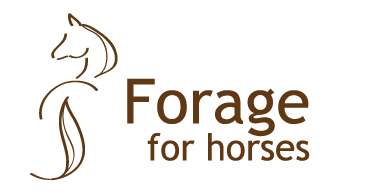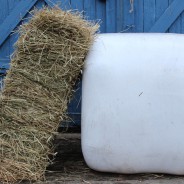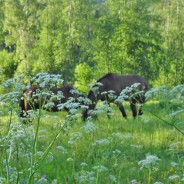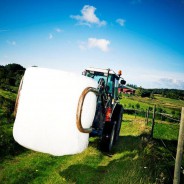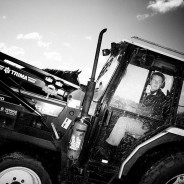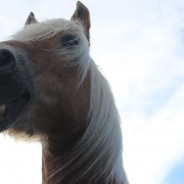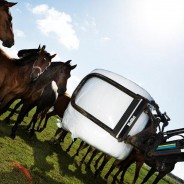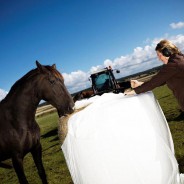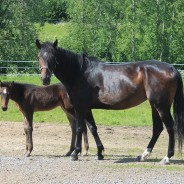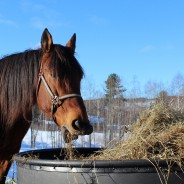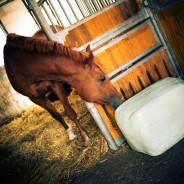The forage blog – all about forage for horses
Here AgrD Sara Muhonen blogs about feeding and forage for horses. If you have questions or suggestions on what we should discourse feel free to e-mail us via the contact page.
Supplement forage with forage
You can actually supplement forage with forage! This can be really useful in stables where you have horses with different energy and protein requirements. You buy a “basic forage” that suits the horses with lower energy and protein requirements. Then you spend money on a “supplement forage” with high energy and protein values. It is also possible to do the opposite, supplement with straw to be able to increase the forage ration with kg DM (dry matter) per day and still keep down the energy and protein intake. Here are two examples, one where...
read moreVitamin E and A in forage for horses
Vitamins are essential organic compounds and they exist in small amounts in natural feeds. They are divided into fat soluble vitamins A, D, E and K and water soluble vitamins B and C. Horses’ vitamin requirements vary with age, performance and stress situation. When horses are on pasture they have no need for supplementation of vitamins. Maintenance fed horses and horses doing light to medium hard work have no, or very small, needs for supplementation of vitamins if they are given a diet based on good forage and daily get to spend time...
read moreCorrect wrapping gives airtight bales
When wrapping bales it is useful to stretch the plastic film about 70%; draw two parallel lines with a felt pen with 10 cm apart on the coil, when the film is stretched the width between the lines should be 17-18 cm. Let the film layers overlap each other about 55% to give the splices the extra seal necessary to effectively prevent leakage. It is also important that the adhesion between the film layers is effective and that round bales are stored standing, read more about this here! Sara...
read moreCorrect driving technique gives better bales and higher profitability
To get an even density of the bale the swath has to be even. The bale gets a straight profile and even density if the swath is a little bit wider. If the bale for example should be 1.20 m wide the swath should be 1.30-1.40 m wide. The outer edges of the swath gets pushed together when going into the baler, which compensates for the swath being thinner on the edges. When bales have a straight profile and even density they get a good centre of gravity and therefore are easier to handle. Adjusting driving speed also affects density,...
read moreCut or long-stemmed forage – does it make a difference to the horse?
Wrapped forages for horses are usually conserved long-stemmed, for other animals it is more common to cut or chop the forage before baling which can facilitate the ensiling process and improve storage stability of the forage. In this study pH and acetic acid in faeces and the faecal particle size distribution were measured in ten horses which in two four-week periods were fed cut (7 cm) and long-stemmed haylage from the same ley harvested the same day. Also the horses eating time (min/kg DM (dry matter)), chewing frequency (chews/min) and...
read moreHarvest date most important for protein and fibre in red clover
Red clover (Trifolium pratense L.) is protein rich and relatively risk-free to grow. The later the stage of maturity the lower protein content and higher fibre content in the red clover, which is due to that the stem part increases at the expense of the leaf part. In this study five different varieties of red clover were harvested at five different harvest dates in the south of Sweden. The red clover varieties were SW Ares, Nancy, Rozeta, Vicky and Taifun. Harvest dates were 11 days before first harvest (31/5), at first harvest (11/6), 7 days...
read moreAdditives for the ensiling process
Additives in silage are to help the ensiling process and they can be chemical in the form of organic acids, for example formic acid, or biological in the form of freeze-dried lactic acid producing bacteria. Additives inhibit the activity of unwanted bacteria, fungus, mould and yeast and prevent degradation of nutrients. Chemical additives inhibit the growth of unwanted microorganisms by decreasing the pH of the crop. Biological additives give additional contribution of the lactic acid producing bacteria that are needed for the ensiling...
read moreAccess to forage in the paddock positive for fertility rate
That horses have both nutritionally and mentally a great need for eating forage is well known and to be without access to forage during longer periods can imply severe stress. In broodmares stress can have negative effects on oestrous expression and pregnancy. In this study 100 Arab mares were randomly divided into two groups where one group had access to forage and the other group did not have access to forage in the paddock during the day. The two groups were kept in paddocks of the same size with access to water from 9 am to 3 pm. All...
read moreForage buffers the hindgut
The feeding practices can have impact on the ecosystem in the hindgut of the horse. This study examined the effect on the hindgut environment in riding horses in training when the forage (hay) was fed before the concentrate (oats) and vice versa. When the horses were fed the forage before the concentrate instead of the opposite, the faecal pH and the buffering capacity of the faeces were higher (Table 1). To feed the forage before the concentrate also implied positive differences in the short-chain fatty acids in the faeces: the concentration...
read moreHygienic quality of haylage autumn and spring
Making haylage instead of silage can imply a higher risk of mould growth in the bales. Haylage is drier and in wrapped forages with DM concentrations of 65-70% the lactic acid production stops and the risk of mould growth increases partly due to a larger portion of air pits and higher risk for puncturing the plastic. You can read more about the differences between haylage and silage here and here. In this study haylage samplings were performed at 18 horse farms and samples were taken at two occasions, in autumn and the following spring. Also...
read more